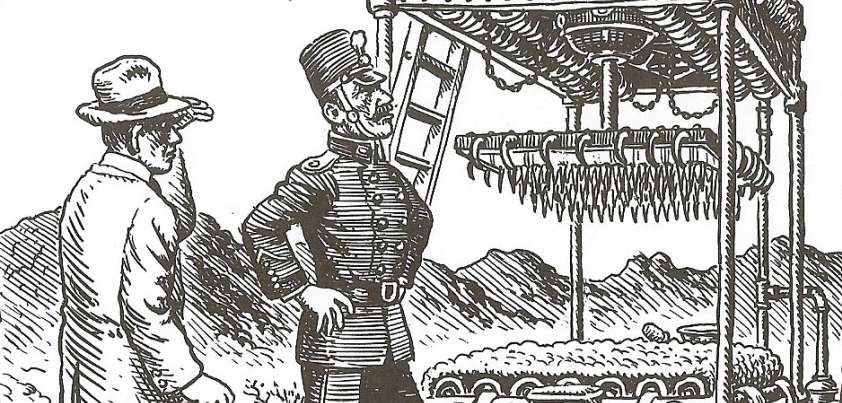 This Franz Kafka story is a study on what can happen when you put a psychopath in charge of a process (or country) in which they have unfettered power and can make decisions over life and death with impunity. The story deals with some heavy themes: justice, due process, capital punishment, torture, sadistic voyeurism, and the difficulty of institutional change (even if for the good!). Central to all this is the “machine”, which seems to know that its time has come and chooses to self-destruct along with the only person left who cares about it. More…
This Franz Kafka story is a study on what can happen when you put a psychopath in charge of a process (or country) in which they have unfettered power and can make decisions over life and death with impunity. The story deals with some heavy themes: justice, due process, capital punishment, torture, sadistic voyeurism, and the difficulty of institutional change (even if for the good!). Central to all this is the “machine”, which seems to know that its time has come and chooses to self-destruct along with the only person left who cares about it. More…
Archives
The Glamour of the Snow
 In this story by Algernon Blackwood, a writer for whom the spell of Nature was greater than all other spells in the world combined takes an extended working holiday at a Swiss alpine resort. A spur of the moment decision to go ice-skating alone after midnight results in an encounter with a spectral woman who suddenly disappears and dominates his thoughts for days. At their next meeting, at her “home” high on a snow-covered mountain, she triess to make him hers. Themes include the beauty and menace of nature, religion vs. paganism, isolation, demonic seduction, the supernatural. More…
In this story by Algernon Blackwood, a writer for whom the spell of Nature was greater than all other spells in the world combined takes an extended working holiday at a Swiss alpine resort. A spur of the moment decision to go ice-skating alone after midnight results in an encounter with a spectral woman who suddenly disappears and dominates his thoughts for days. At their next meeting, at her “home” high on a snow-covered mountain, she triess to make him hers. Themes include the beauty and menace of nature, religion vs. paganism, isolation, demonic seduction, the supernatural. More…
Click-Clack the Rattlebag
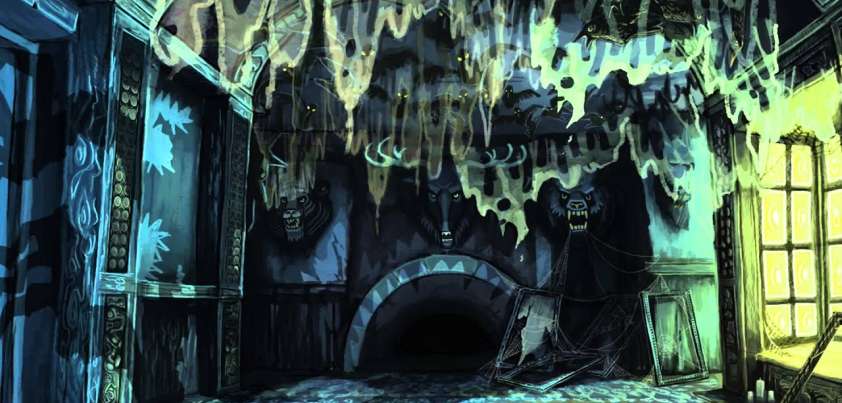 This short campfire-style horror story by Neil Gaiman sucks you in (no disrespect to Click-Clacks intended) and then at the very end surprises. A young man is spending time with his girlfriend’s much younger brother. The boy asks for a bed-time story that is “a little bit” scary. In describing what he means by this the boy tells the man about Click-Clacks, “the best monsters ever”, that come from the dark when you don’t pay attention. We are left wondering how the narrator is still around to tell the tale. Themes include fear, awareness, manipulation, the power of storytelling. More…
This short campfire-style horror story by Neil Gaiman sucks you in (no disrespect to Click-Clacks intended) and then at the very end surprises. A young man is spending time with his girlfriend’s much younger brother. The boy asks for a bed-time story that is “a little bit” scary. In describing what he means by this the boy tells the man about Click-Clacks, “the best monsters ever”, that come from the dark when you don’t pay attention. We are left wondering how the narrator is still around to tell the tale. Themes include fear, awareness, manipulation, the power of storytelling. More…
The Treasure of Abbot Thomas
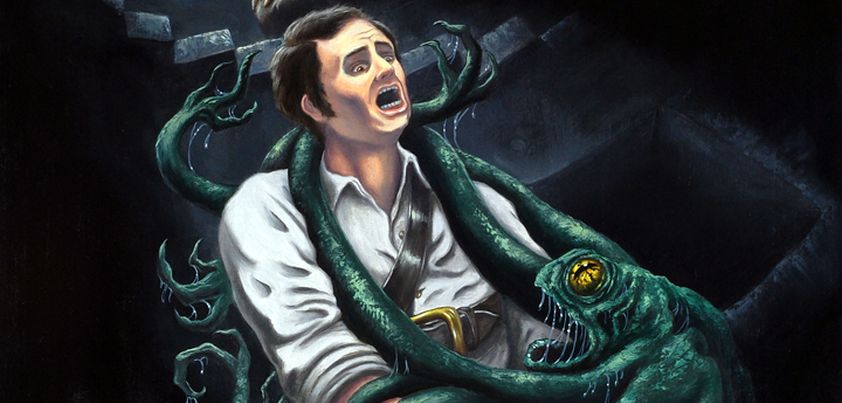 In this story by M. R. James, a British antiquary comes across an old book written in Latin that tells of a German monastery in which a fortune in gold is believed to have been hidden. He believes the key to the treasure lies on a stained-glass window removed from the Abby and returned to England when the monastery was closed. He finds the window, decodes the message hidden on it and, despite the warning contained in the message, finds the gold. His only problem… dealing with the treasure’s monstrous guardian. Themes include treasure hunting, cryptography, fear, the supernatural. More…
In this story by M. R. James, a British antiquary comes across an old book written in Latin that tells of a German monastery in which a fortune in gold is believed to have been hidden. He believes the key to the treasure lies on a stained-glass window removed from the Abby and returned to England when the monastery was closed. He finds the window, decodes the message hidden on it and, despite the warning contained in the message, finds the gold. His only problem… dealing with the treasure’s monstrous guardian. Themes include treasure hunting, cryptography, fear, the supernatural. More…
Don’t Look Now
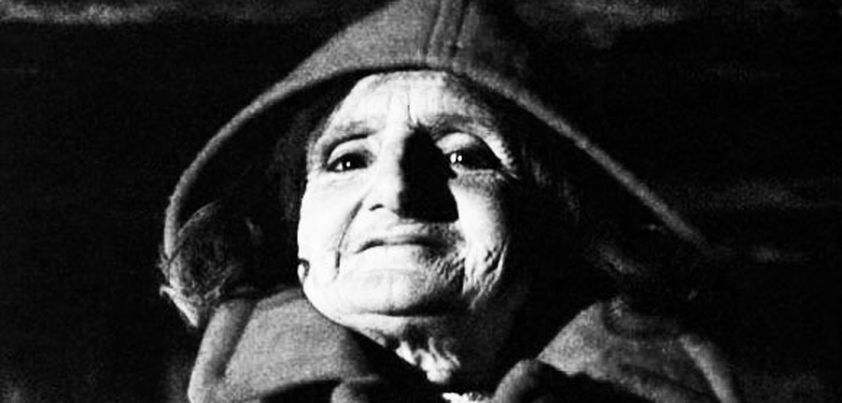 This Daphne du Maurier story opens with a British couple dining in Venice. The holiday, through which they hope to rebuild their relationship following the death of their young daughter, takes an eerie turn when a fellow diner claims to be able to “see” the spirit of the dead girl sitting between them, and issues a grim warning that they should leave Venice immediately. When a family emergency calls them back home later that day, they take this as the meaning of the warning. The wife leaves the next morning; the husband never does. Themes: grief, the supernatural, scepticism, suspicion/paranoia. More…
This Daphne du Maurier story opens with a British couple dining in Venice. The holiday, through which they hope to rebuild their relationship following the death of their young daughter, takes an eerie turn when a fellow diner claims to be able to “see” the spirit of the dead girl sitting between them, and issues a grim warning that they should leave Venice immediately. When a family emergency calls them back home later that day, they take this as the meaning of the warning. The wife leaves the next morning; the husband never does. Themes: grief, the supernatural, scepticism, suspicion/paranoia. More…
The Werewolf
 This is the first of Angela Carter’s well-known “wolf tales” series. Although the beginning resembles the Red Riding Hood children’s story, things soon take a very different turn. A wolf loses a paw, grandma is missing a hand, and the villagers show their bravery by beating the poor woman to death. What I particularly like is the way that Carter uses foreshadowing and omissions in the story-line to leave readers with a question: Was the grandmother really a witch/were-woman, or was the “good child” one of those northern country people with a cold heart mentioned in the opening sentence? More…
This is the first of Angela Carter’s well-known “wolf tales” series. Although the beginning resembles the Red Riding Hood children’s story, things soon take a very different turn. A wolf loses a paw, grandma is missing a hand, and the villagers show their bravery by beating the poor woman to death. What I particularly like is the way that Carter uses foreshadowing and omissions in the story-line to leave readers with a question: Was the grandmother really a witch/were-woman, or was the “good child” one of those northern country people with a cold heart mentioned in the opening sentence? More…
There is a Reaper
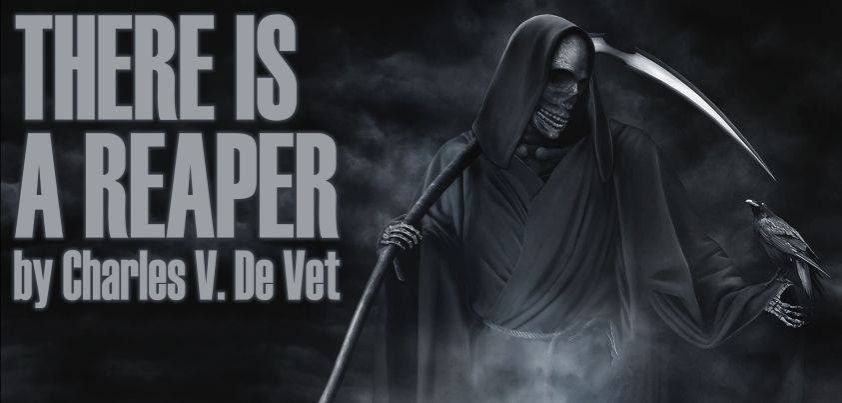 The English idiom ‘Grim Reaper’ refers to either death itself, or the Angel of Death who comes to collect a soul when someone dies. This story by Charles de Vet begins with the following words: Doctors had given him just one month to live. A month to wonder, what comes afterward? There was one way to find out – ask a dead man! The question had to be asked within a few minutes of death, so he decided the only thing to do was murder someone. The murdered man’s frightening answer was not what he had expected. More…
The English idiom ‘Grim Reaper’ refers to either death itself, or the Angel of Death who comes to collect a soul when someone dies. This story by Charles de Vet begins with the following words: Doctors had given him just one month to live. A month to wonder, what comes afterward? There was one way to find out – ask a dead man! The question had to be asked within a few minutes of death, so he decided the only thing to do was murder someone. The murdered man’s frightening answer was not what he had expected. More…
Zero Hour
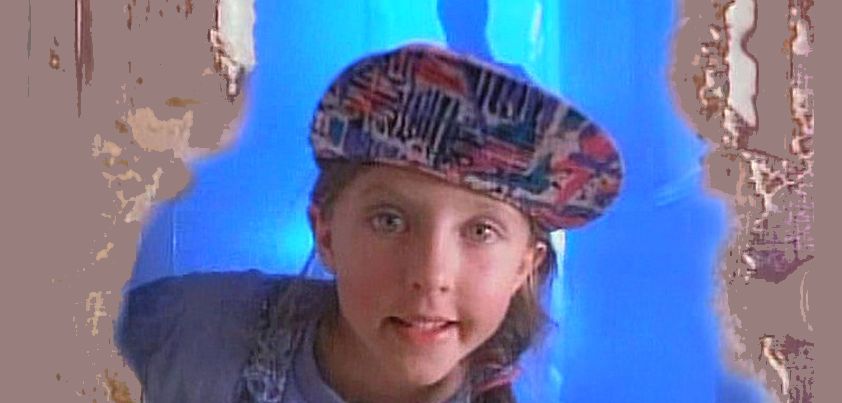 This chilling story by Ray Bradbury involves an inattentive mother, a feisty seven-year-old girl, and her imaginary friend Drill. Throughout most of the story, the girl leads her friends in a construction game following instructions she receives from Drill. Her mother later learns that groups of children across America are playing the same game. Its name is “Invasion”, and for her the climax comes in a single word: Peekaboo. The major theme of the story is complacency. The mother senses something is wrong, but doesn’t act until too late. Other themes include human smugness (We’re impregnable!), childhood innocence/impressionability, manipulation, fear. More…
This chilling story by Ray Bradbury involves an inattentive mother, a feisty seven-year-old girl, and her imaginary friend Drill. Throughout most of the story, the girl leads her friends in a construction game following instructions she receives from Drill. Her mother later learns that groups of children across America are playing the same game. Its name is “Invasion”, and for her the climax comes in a single word: Peekaboo. The major theme of the story is complacency. The mother senses something is wrong, but doesn’t act until too late. Other themes include human smugness (We’re impregnable!), childhood innocence/impressionability, manipulation, fear. More…
Young Goodman Brown
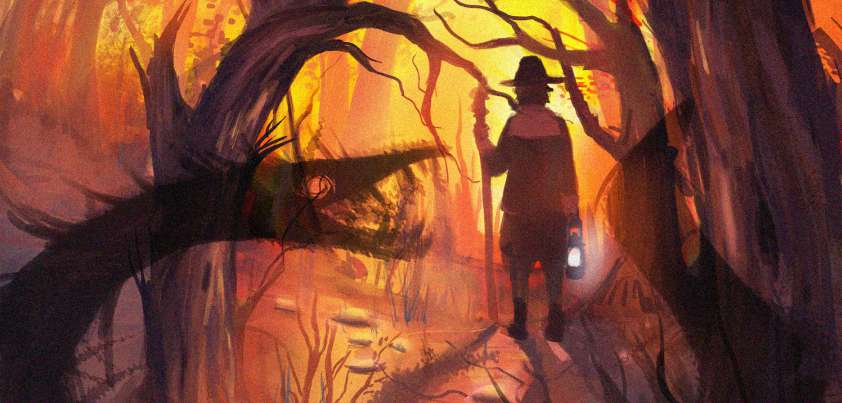 In this story by Nathaniel Hawthorne, a pious young Puritan named Goodman Brown travels into the forest one night to prove that he can resist evil. There he meets a man implied to be the devil, who demonstrates that most of his townspeople, including his wife Faith, embrace witchcraft. Thanks to Brown’s belief in his moral superiority, he accepts everything he sees without question. He fails to appreciate that the visions may have been a dream, contrived by the devil as a way of deceiving him. Themes: temptation (good vs. evil), dreams vs. reality, deceit, paranoia, loss of faith, alienation. More…
In this story by Nathaniel Hawthorne, a pious young Puritan named Goodman Brown travels into the forest one night to prove that he can resist evil. There he meets a man implied to be the devil, who demonstrates that most of his townspeople, including his wife Faith, embrace witchcraft. Thanks to Brown’s belief in his moral superiority, he accepts everything he sees without question. He fails to appreciate that the visions may have been a dream, contrived by the devil as a way of deceiving him. Themes: temptation (good vs. evil), dreams vs. reality, deceit, paranoia, loss of faith, alienation. More…
The Pit and the Pendulum
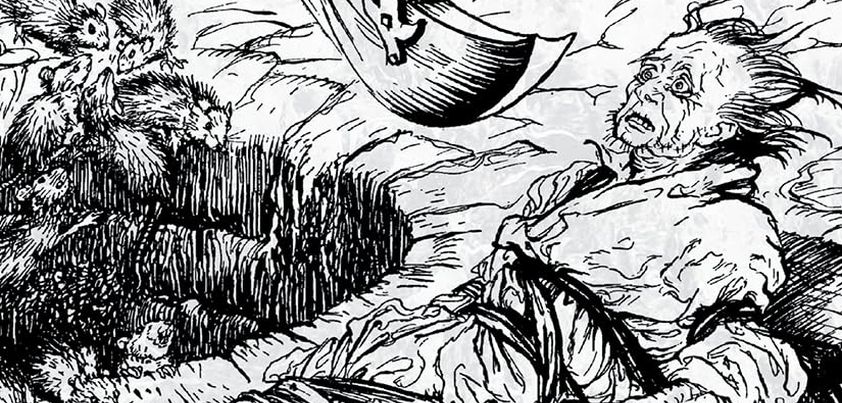 In this story by Edgar Allan Poe, a man in a dreamlike state of consciousness swoons upon being sentenced to death by the Spanish Inquisition. He wakes to find himself tied to a wooden frame in a chamber housing three forms of horrific death: a deep, water-filled pit; a slowly descending, razor-sharp pendulum; and contracting, red-hot walls. After almost giving up and welcoming death, he finds the will to live and devises a plan to escape the pendulum. As the walls close in, an unexpected visitor saves him. Themes include injustice, sadism, fear, time, the will to live, inventiveness, salvation More…
In this story by Edgar Allan Poe, a man in a dreamlike state of consciousness swoons upon being sentenced to death by the Spanish Inquisition. He wakes to find himself tied to a wooden frame in a chamber housing three forms of horrific death: a deep, water-filled pit; a slowly descending, razor-sharp pendulum; and contracting, red-hot walls. After almost giving up and welcoming death, he finds the will to live and devises a plan to escape the pendulum. As the walls close in, an unexpected visitor saves him. Themes include injustice, sadism, fear, time, the will to live, inventiveness, salvation More…
Slaughter House
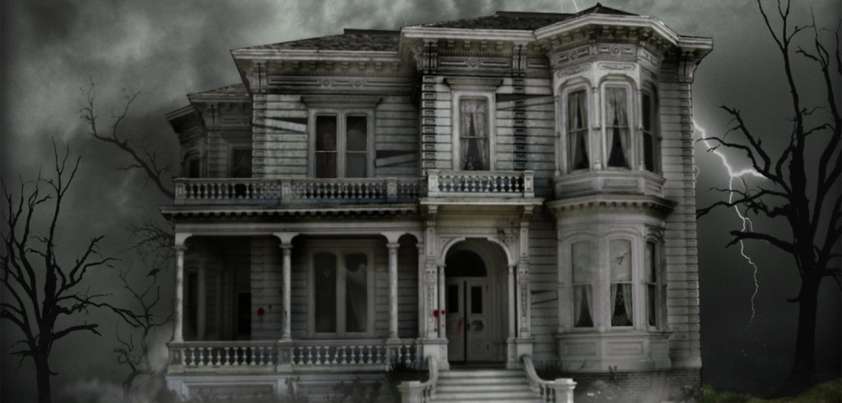 Richard Matheson fans may find Slaughter House hard going as he drops his normal crisp, easy to read writing style to experiment with the formality of mid-Victorian writing. The result: some very obscure vocabulary and long, pompously formal sentences that sometimes appear disjointed and confusing. The story itself is captivating. Two brothers, whose described relationship suggests a little more than brotherly love, fall for the lustful ghost of a young woman that enchants, has its way with, and then tries to kill them. Only one of the three survives! Themes include insanity, homoeroticism, seduction, jealousy, the supernatural! More…
Richard Matheson fans may find Slaughter House hard going as he drops his normal crisp, easy to read writing style to experiment with the formality of mid-Victorian writing. The result: some very obscure vocabulary and long, pompously formal sentences that sometimes appear disjointed and confusing. The story itself is captivating. Two brothers, whose described relationship suggests a little more than brotherly love, fall for the lustful ghost of a young woman that enchants, has its way with, and then tries to kill them. Only one of the three survives! Themes include insanity, homoeroticism, seduction, jealousy, the supernatural! More…
The Willows
 This story from Algernon Blackwood about a canoe trip gone wrong is considered one of the greatest supernatural thrillers of all time. A feature is Blackwood’s ability to build and sustain terror through atmosphere alone. The canoeists camp on a small island among the idyllic, willow-lined channels of the swollen Danube delta. Their campsite sits on the boundary between the known world and another. A malevolent presence has become aware of their existence, and stalks the creeping willows looking for a human sacrifice. Themes include: the beauty and menace of nature, camaraderie, rationality vs. fear, courage, sacrifice, the supernatural. More…
This story from Algernon Blackwood about a canoe trip gone wrong is considered one of the greatest supernatural thrillers of all time. A feature is Blackwood’s ability to build and sustain terror through atmosphere alone. The canoeists camp on a small island among the idyllic, willow-lined channels of the swollen Danube delta. Their campsite sits on the boundary between the known world and another. A malevolent presence has become aware of their existence, and stalks the creeping willows looking for a human sacrifice. Themes include: the beauty and menace of nature, camaraderie, rationality vs. fear, courage, sacrifice, the supernatural. More…
Children of the Corn
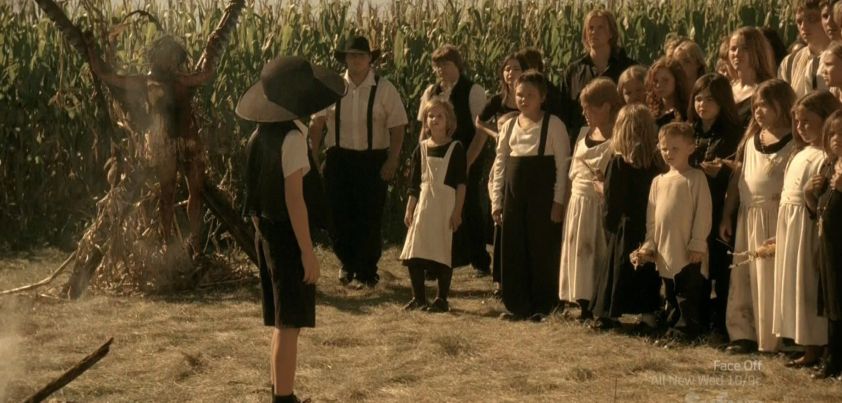 Combine a boy with his throat cut who runs out onto a country road, a seemingly deserted town where the only community building still in use is a desecrated church, a hoard of murderous children, and a mysterious presence living in the surrounding cornfields, and you have a typical Stephen King horror/thriller. You get the feeling that King deliberately set out to make sure that readers wouldn’t be too upset when the main characters (a bickering couple driving through the American Midwest) meet their inevitable gruesome end. Themes: cultism, exploited religion, human sacrifice, the supernatural. More…
Combine a boy with his throat cut who runs out onto a country road, a seemingly deserted town where the only community building still in use is a desecrated church, a hoard of murderous children, and a mysterious presence living in the surrounding cornfields, and you have a typical Stephen King horror/thriller. You get the feeling that King deliberately set out to make sure that readers wouldn’t be too upset when the main characters (a bickering couple driving through the American Midwest) meet their inevitable gruesome end. Themes: cultism, exploited religion, human sacrifice, the supernatural. More…
Other People
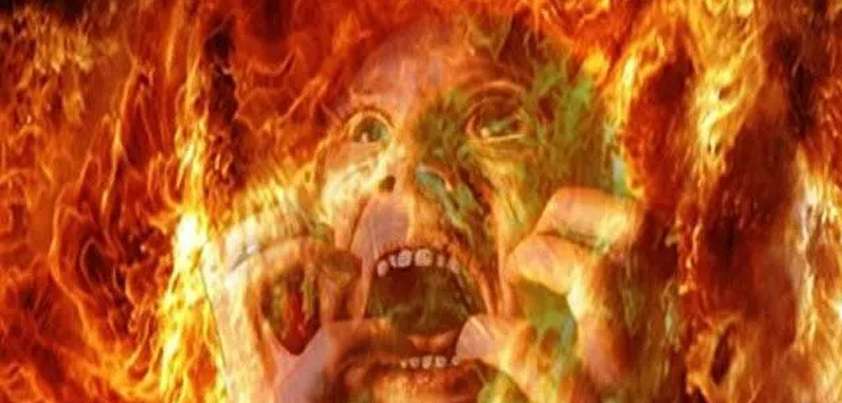 This Neil Gaiman is not for the fainthearted. Upon entering a room in Hell, a man meets the “demon” that will be his tormentor. After suffering excruciating pain from each of the 211 torture instruments lining the walls, he asks the demon what comes next. The answer: the true pain begins! And so it does for several thousand more years. In the last sentence, we learn why Gaiman agreed to change the title from his original choice (Afterlife) to Other People. Themes include sin and punishment, and the nature of Hell (suffering and inflicting dehumanizing pain and suffering). More…
This Neil Gaiman is not for the fainthearted. Upon entering a room in Hell, a man meets the “demon” that will be his tormentor. After suffering excruciating pain from each of the 211 torture instruments lining the walls, he asks the demon what comes next. The answer: the true pain begins! And so it does for several thousand more years. In the last sentence, we learn why Gaiman agreed to change the title from his original choice (Afterlife) to Other People. Themes include sin and punishment, and the nature of Hell (suffering and inflicting dehumanizing pain and suffering). More…
I Have No Mouth and I Must Scream
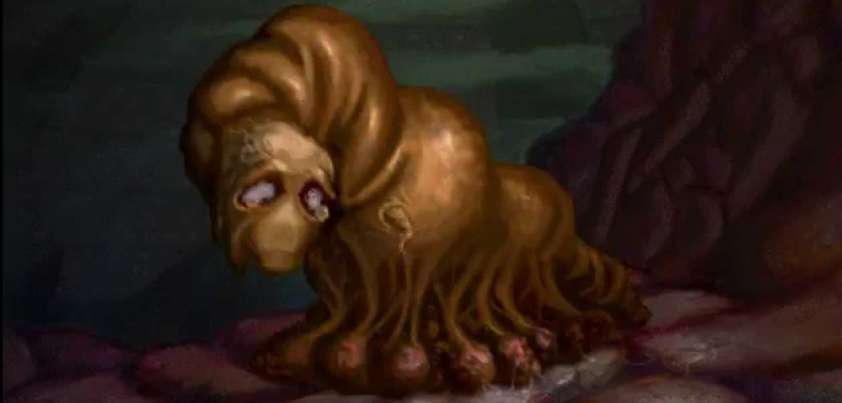 This story from Harlan Ellison is an example of New Wave Science Fiction, a literary movement that flourished in the 1960s and 1970s. Distinguishing features are storylines that are intellectually implausible, and disturbing themes that would not normally be included in traditional science fiction. A sentient supercomputer has destroyed the human race other than five ‘specimens’. With no creative outlet for its powers, it has kept these alive and subjected them to torturous challenges for over one hundred years as revenge against humanity for creating it. Themes: humanity vs. technology, godhood, individualism, revenge, cruelty, violence, misogyny, self-sacrifice More…
This story from Harlan Ellison is an example of New Wave Science Fiction, a literary movement that flourished in the 1960s and 1970s. Distinguishing features are storylines that are intellectually implausible, and disturbing themes that would not normally be included in traditional science fiction. A sentient supercomputer has destroyed the human race other than five ‘specimens’. With no creative outlet for its powers, it has kept these alive and subjected them to torturous challenges for over one hundred years as revenge against humanity for creating it. Themes: humanity vs. technology, godhood, individualism, revenge, cruelty, violence, misogyny, self-sacrifice More…
The Dunwich Horror
 In this cosmic horror story by H. P. Lovecraft, an early 19th century practitioner of the black arts summons an “Elder Thing” from another dimension to mate with his daughter. The result is an unusual set of twins. One has enough human characteristics to allow it to function in society. The other, which takes more after its father, is an invisible monster the size of a house, intent on destroying life on earth and moving the planet to the “Other Side”. Themes include the occult, madness, fear, heroism, realms beyond human understanding, the potential transient nature of humanity. More…
In this cosmic horror story by H. P. Lovecraft, an early 19th century practitioner of the black arts summons an “Elder Thing” from another dimension to mate with his daughter. The result is an unusual set of twins. One has enough human characteristics to allow it to function in society. The other, which takes more after its father, is an invisible monster the size of a house, intent on destroying life on earth and moving the planet to the “Other Side”. Themes include the occult, madness, fear, heroism, realms beyond human understanding, the potential transient nature of humanity. More…
The Masque of the Red Death
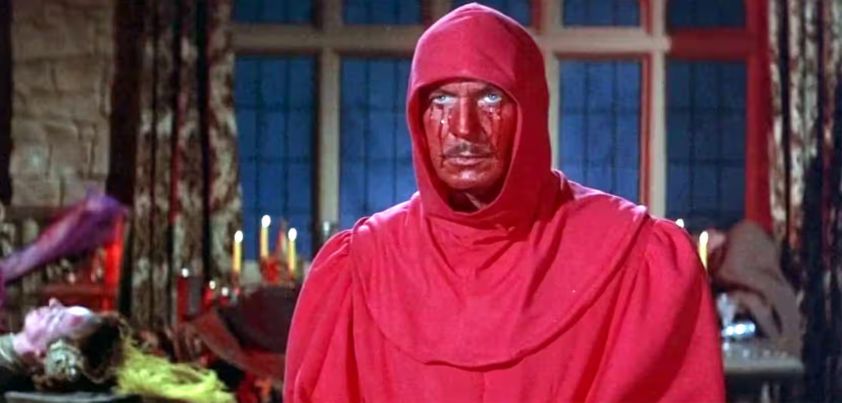 In this Edgar Allan Poe classic an eccentric, possibly mad prince of an unnamed country hopes to evade a plague known as the “Red Death” by locking himself inside a secluded abbey. Being a fun-loving fellow, he brings along an entourage comprising a thousand hale and light-hearted friends from among the knights and dames of his court and an unspecified number of servants and entertainers. They have a jolly time culminating in a lavish masquerade ball where the Red Death incarnate joins the party. Themes include the inevitability of death, fear, social class (abandonment of the common people), foolishness (madness?). More…
In this Edgar Allan Poe classic an eccentric, possibly mad prince of an unnamed country hopes to evade a plague known as the “Red Death” by locking himself inside a secluded abbey. Being a fun-loving fellow, he brings along an entourage comprising a thousand hale and light-hearted friends from among the knights and dames of his court and an unspecified number of servants and entertainers. They have a jolly time culminating in a lavish masquerade ball where the Red Death incarnate joins the party. Themes include the inevitability of death, fear, social class (abandonment of the common people), foolishness (madness?). More…
The Monkey’s Paw
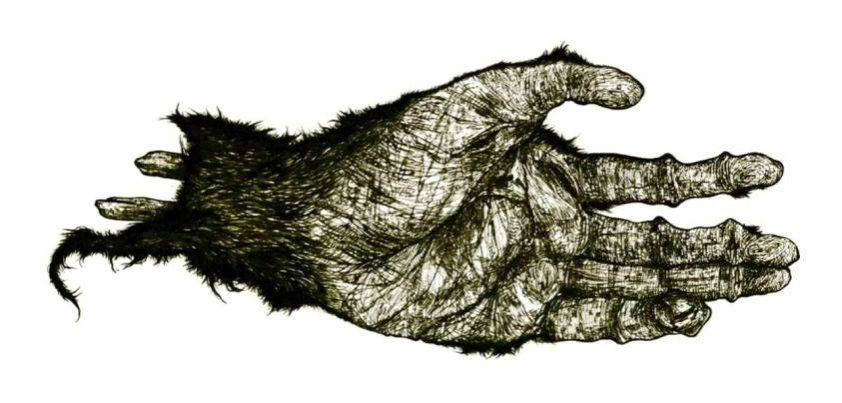 Today we are bringing you The Monkey’s Paw by W. W. Jacobs, one of the most famous horror stories of all time. First published in 1902, it has since appeared in many forms including live plays, movies, TV shows, radio plays, books, comics and cartoons (even a Simpsons episode!). In the story, a man makes a wish upon an enchanted monkey’s paw with disastrous results for his family. First, some advice before you start to read. Don’t do it sitting at home alone on a dark and stormy night! Themes: family, greed, tempting fate, industrialization (work safety), death, the supernatural. More…
Today we are bringing you The Monkey’s Paw by W. W. Jacobs, one of the most famous horror stories of all time. First published in 1902, it has since appeared in many forms including live plays, movies, TV shows, radio plays, books, comics and cartoons (even a Simpsons episode!). In the story, a man makes a wish upon an enchanted monkey’s paw with disastrous results for his family. First, some advice before you start to read. Don’t do it sitting at home alone on a dark and stormy night! Themes: family, greed, tempting fate, industrialization (work safety), death, the supernatural. More…
The Hospice
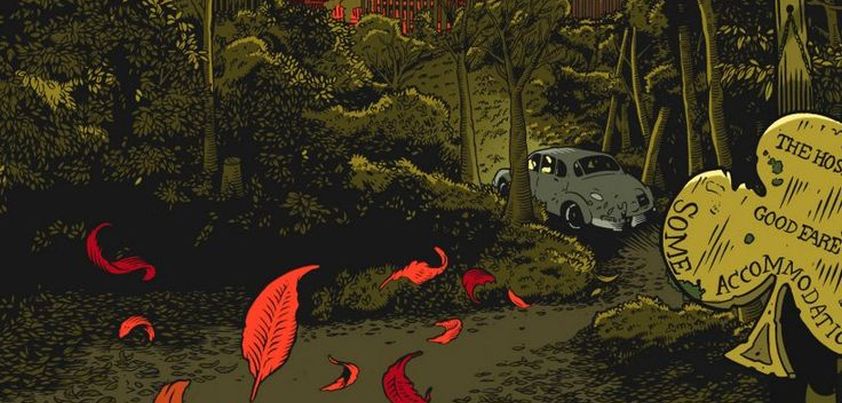 Author Robert Aickman preferred to be called a writer of “strange fiction” rather than ghost or horror stories. The Hospice, considered one of his best, is a good example of why. The story is full of unexplained twists and turns. It builds to what readers expect will be a typical horror climax, then seemingly falls flat with the protagonist safely on his way home. But is he? It’s easy to see why Aickman has been called the English Kafka. Was it a dream? Delirium caused by an animal bite? Supernatural forces? Or did he die along the way? More…
Author Robert Aickman preferred to be called a writer of “strange fiction” rather than ghost or horror stories. The Hospice, considered one of his best, is a good example of why. The story is full of unexplained twists and turns. It builds to what readers expect will be a typical horror climax, then seemingly falls flat with the protagonist safely on his way home. But is he? It’s easy to see why Aickman has been called the English Kafka. Was it a dream? Delirium caused by an animal bite? Supernatural forces? Or did he die along the way? More…
The Raft
 In this story from Stephen King, the last swim of the season by four college students also proves to be the last swim of their lives. On an alcohol-fuelled whim, the foursome drive to a deserted lake to swim out to a raft moored fifty yards off shore, say good-bye to summer, and then swim back. As they reach the raft, they learn to their horror that a mysterious black mass floating on the surface is stalking them for its next meal(s). Themes include teenage exuberance, machismo, chauvinism, sexuality, fear, the unknown/supernatural. More…
In this story from Stephen King, the last swim of the season by four college students also proves to be the last swim of their lives. On an alcohol-fuelled whim, the foursome drive to a deserted lake to swim out to a raft moored fifty yards off shore, say good-bye to summer, and then swim back. As they reach the raft, they learn to their horror that a mysterious black mass floating on the surface is stalking them for its next meal(s). Themes include teenage exuberance, machismo, chauvinism, sexuality, fear, the unknown/supernatural. More…